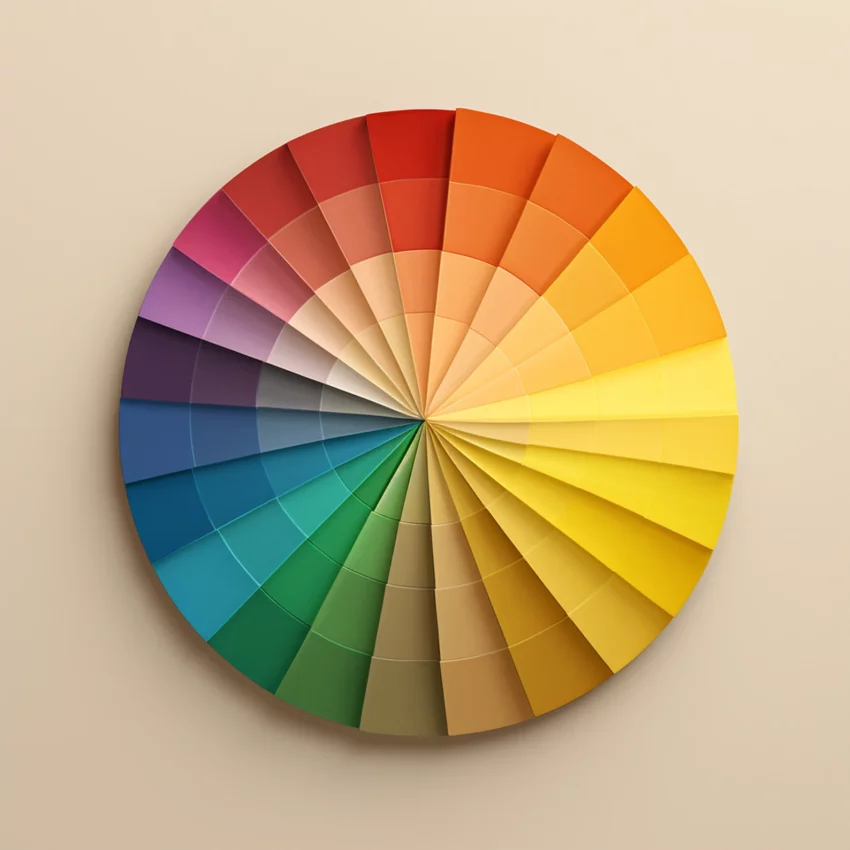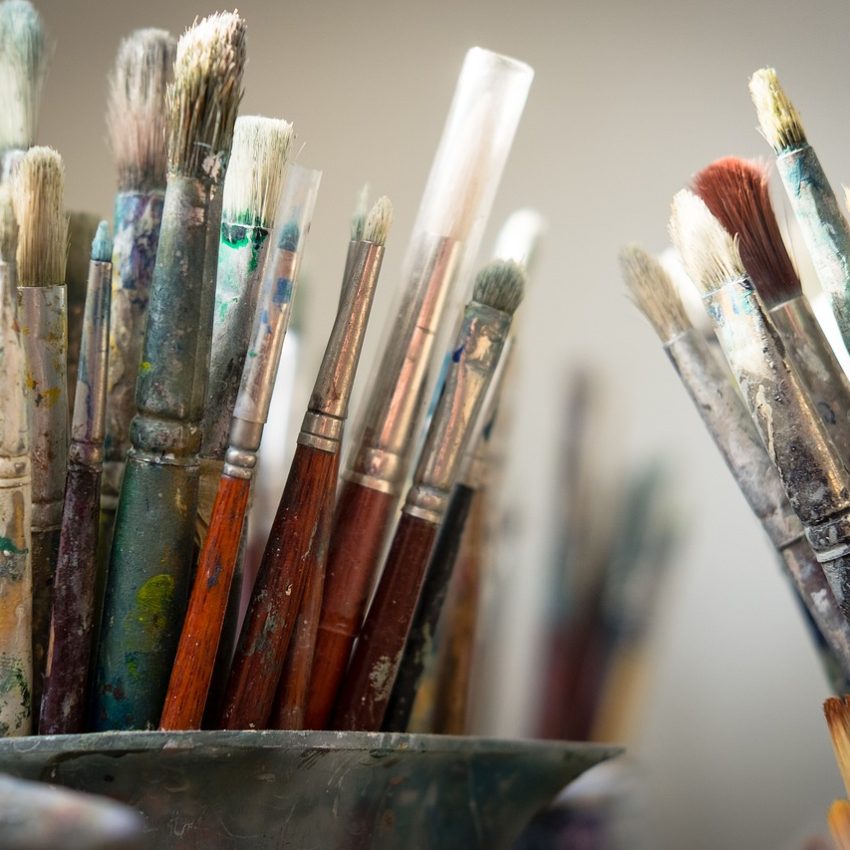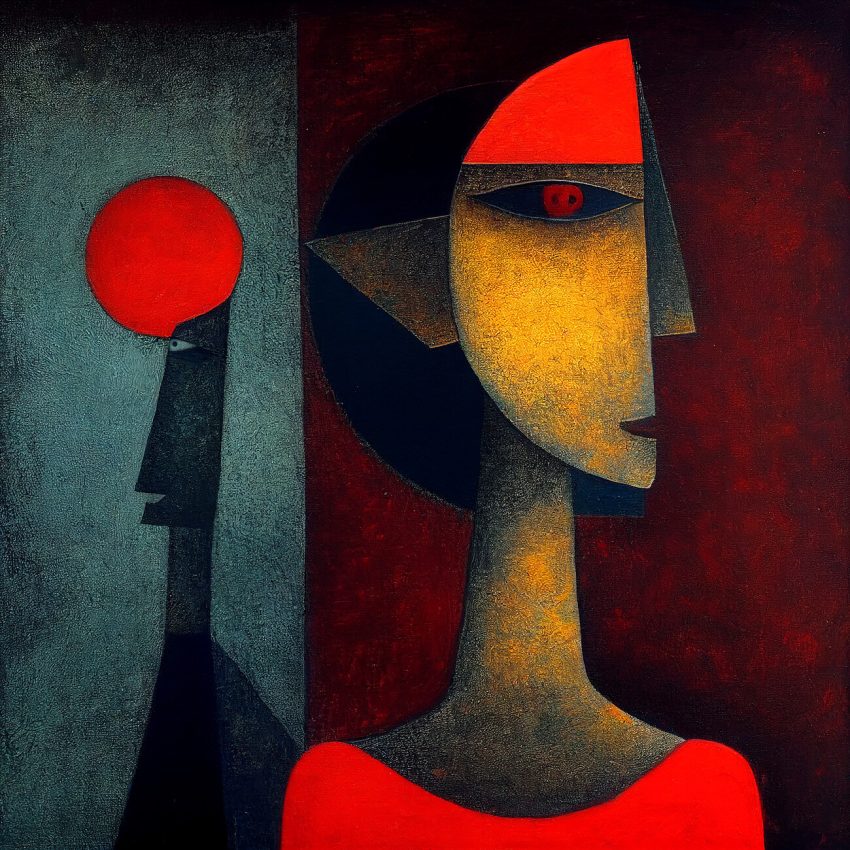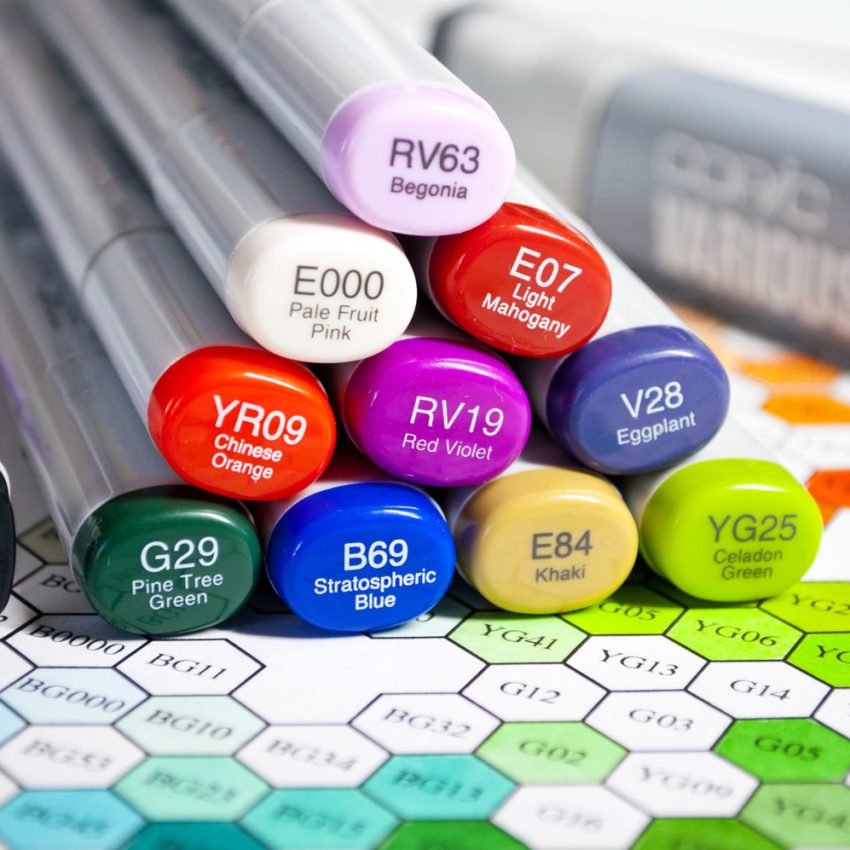What is Romanticism Art
Definition, Characteristics, Art History and relevance
Origins of Romanticism in visual art
Romanticism, an intellectual and artistic movement that originated in Europe during the late 18th century, emerged as a response to the rationalism and order of the Enlightenment era, as well as the rigidity of Neoclassicism.
It is a cultural movement that found expression not only in literature but also in art, profoundly influencing the trajectory of both realms. Romanticism is precisely situated neither in subject nor in exact truth, but rather in the spontaneous overflow of powerful feelings and a sense of awe towards the world.
One key aspect that distinguishes Romanticism from preceding artistic movements is its emphasis on subjective experience over objective reality.
This shift led artists to explore landscapes not just for their visual beauty but also for their ability to evoke deep emotional responses.
By delving into the realms of dreams, nightmares, and fantasies, Romantic artists challenged traditional notions of artistry and sought to create works that resonated with the complexities of human emotions.
In the realm of art history, Romanticism marks a significant departure from the Neoclassical history painting of the previous era.
While Neoclassical artists focused on depicting idealised scenes from classical antiquity, Romantic artists emphasised emotion, individualism, and the sublime in their works.
Artists during this time began exploring themes of nature, mythology, and the supernatural as a means of expressing their innermost emotions and desires. The Romantic period, which spanned from the late 18th to the mid-19th century, witnessed the rise of many talented artists who sought to evoke deep emotional responses from their audience.
The early period of the Romantic era unfolded against the backdrop of war, upheaval, and revolutionary fervor. The French Revolution, which spanned from 1789 to 1799, marked a turning point in European history, ushering in an era of profound political and social change.
The ideals of liberty, equality, and fraternity espoused by the revolutionaries resonated deeply with many early Romantics across Europe, who saw in the French Revolution a beacon of hope and inspiration.
The Napoleonic Wars, which followed the French Revolution and lasted until 1815, further shaped the landscape of the Romantic era, engulfing Europe in conflict and turmoil. The events and ideologies of the French Revolution exerted a direct influence on the Romantic movement, fueling a spirit of rebellion, individualism, and idealism among artists, writers, and intellectuals.
Indeed, the early Romantics’ sympathy for the ideals and achievements of the French revolutionaries served as a catalyst for the emergence of Romanticism as a cultural and artistic force that sought to challenge the status quo and celebrate the power of the human spirit.
Characteristics: Emotion, nature, individualism in paintings
In Romanticism art, emotions are not simply conveyed through facial expressions but are deeply embedded in the overall atmosphere of the painting. Artists like Caspar David Friedrich and J.M.W. Turner expertly capture a sense of melancholy, awe, and passion through their use of color, lighting, and composition. These paintings evoke a range of emotional responses from viewers, inviting them to contemplate their own feelings and experiences.
Nature plays a central role in Romantic paintings as artists sought to connect with the sublime power and beauty of the natural world. Through intricate landscapes, turbulent seascapes, and majestic vistas, painters like John Constable and Eugene Delacroix express their reverence for nature’s grandeur. The portrayal of nature as a powerful force that can both inspire and overwhelm reflects the Romantic belief in the spiritual significance of the natural world.
Individualism is another key characteristic of Romantic paintings as artists sought to express their unique perspectives and personal experiences. Masters such as Francisco Goya and William Blake infused their works with symbolic imagery and personal narratives that reflected their inner worlds. By embracing individualism in their art, these painters challenged traditional conventions and paved the way for artistic freedom and self-expression in future generations.
Artists: Delacroix, Turner, Goya & Others
In the realm of Romanticism art, three notable names stand out: Delacroix, Turner, and Goya.
The French Romantic painter Eugène Delacroix, whose masterpiece “Liberty Leading the People” embodies the spirit of revolution and individual liberty with its vibrant energy, played a crucial role in the development of Romanticism in art. Eugene Delacroix’s bold use of colour and expressive brushstrokes conveyed intense emotions in his works, often depicting themes of passion and political turmoil. Similarly, the German writer Johann Wolfgang von Goethe seminal work “Faust” epitomized the Romantic fascination with the individual’s quest for meaning and transcendence.
The British artist William Turner, known for his atmospheric landscapes and seascapes exemplified the Romantic style with his evocative use of light and colour. J.M.W. Turner was a master of capturing atmospheric light and dramatic landscapes in his paintings. His innovative techniques pushed the boundaries of traditional art forms, inspiring future generations with his unique vision that blurred the lines between abstraction and realism. Turner’s works evoke a sense of awe and wonder at nature’s power and beauty.
Francisco Goya’s dark portraits of human suffering and social commentary provided a stark contrast to the more idealistic representations prevalent during his time. Through haunting imagery and symbolic motifs, Goya delved into the darker aspects of existence, reflecting on themes such as war, madness, and injustice. His unflinching portrayal of reality left a lasting impact on Romanticism art by challenging conventions and giving voice to marginalized narratives.
In America, the Hudson River School artists, such as Thomas Cole and Frederic Edwin Church, captured the sublime beauty of the American landscape, reflecting the Romantic ideals of awe and wonder in nature. These artists also contributed to the Gothic Revival style, which sought to evoke the medieval past and the mysterious in architecture and design.
Henry Fuseli
Henry Fuseli, with his dramatic and often haunting compositions, occupies a unique place in the pantheon of Romantic artists. His works, such as “The Nightmare” and “The Ghost of Hamlet,” explore themes of fear, desire, and the unconscious mind with an intensity that is both mesmerizing and unsettling. Fuseli’s vivid imagination and penchant for the macabre epitomize the Romantic emphasis on emotion and the irrational. Through his evocative imagery and psychological depth, Fuseli pushed the boundaries of artistic expression, challenging conventional notions of beauty and propriety. His legacy as a pioneer of Romanticism in art endures, inspiring subsequent generations of artists to explore the darker recesses of the human psyche.
Théodore Géricault
Théodore Géricault occupies a significant place within the Romantic movement, particularly in the realm of artwork. His masterpiece, “The Raft of the Medusa,” is emblematic of Romanticism’s fascination with human emotion, suffering, and the sublime.
Through this monumental painting, Géricault captured a harrowing real-life event—the wreck of the French naval frigate Méduse—and transformed it into a powerful allegory of human struggle and resilience in the face of adversity.
The dramatic composition, with its dynamic interplay of light and shadow, conveys a sense of urgency and turmoil, drawing viewers into the chaotic scene. Géricault’s meticulous attention to detail and his empathetic portrayal of the survivors’ plight underscored his commitment to authenticity and emotional truth.
In this way, Géricault exemplifies the Romantic artist’s quest to capture the essence of the human experience and to evoke profound emotional responses from the audience. His contributions to the Romantic movement in art continue to resonate today, inspiring artists to explore themes of passion, suffering, and the human condition.
William Blake
Artist William Blake stands as a quintessential figure in the realm of Romantic artwork. His visionary paintings and poetry intertwine to create a unique and deeply philosophical exploration of the human experience. Blake’s works, such as “The Ancient of Days” and “The Tyger,” delve into themes of spirituality, mysticism, and the power of imagination. Through his vivid imagery and intricate symbolism, Blake captured the essence of the Romantic movement, which embraced the sublime and the supernatural. His art serves as a testament to the boundless creativity and profound insight that characterized the Romantic era, leaving an enduring legacy that continues to inspire generations of artists and thinkers.
John Constable
John Constable, renowned for his breathtaking landscapes, emerged as one of the foremost practitioners of Romanticism in the realm of art. His paintings, such as “The Hay Wain” and “The Cornfield,” depict the English countryside with remarkable detail and sensitivity.
Constable’s deep appreciation for nature is evident in his masterful use of light, colour, and atmosphere to evoke a sense of tranquility and awe.
Through his depictions of rural life and pastoral scenes, Constable celebrated the sublime beauty of the natural world, reflecting the Romantic fascination with the untamed wilderness. His works continue to enchant viewers with their timeless charm and profound connection to the landscape.
Influence: Literature and politics impact on art
Literature and politics have always held a powerful sway over the realm of art, influencing both the form and content of artistic expressions. In the context of Romanticism, this influence is particularly pronounced as artists sought to challenge traditional norms and embrace individuality. Writers like William Wordsworth and Percy Bysshe Shelley inspired painters to capture nature’s sublime beauty while at the same time critiquing societal structures in their work.
This fusion of literature and politics with art during the Romantic era led to masterpieces that not only evoked powerful emotions but also carried messages of social change.
The impact of works such as Mary Shelley’s Frankenstein or Eugene Delacroix’s Liberty Leading the People reverberated through society, prompting reflection on issues ranging from scientific ethics to political revolutions. The interconnectedness of these realms created a rich tapestry of ideas that continue to influence artistic movements today, underscoring the enduring relevance and potency of literary and political influences on art.
One of the key figures in the Romanticism movement was the English poet Samuel Taylor Coleridge, whose literary works, such as “The Rime of the Ancient Mariner” and “Kubla Khan,” captured the essence of Romanticism’s emphasis on imagination and the supernatural. Similarly, the American writer Edgar Allan Poe explored themes of mystery, horror, and the macabre in his poetry and short stories, contributing significantly to American Romanticism.
Charles Baudelaire, a central figure in French Romanticism, left an indelible mark on literature and art. His poetry, notably “Les Fleurs du mal” (The Flowers of Evil), delved into themes of beauty, passion, and urban alienation. Baudelaire’s critical essays celebrated contemporary artists like Eugène Delacroix, shaping the Romantic aesthetic in France.
His concept of the “spleen” and exploration of human psyche influenced subsequent poets and artists. Baudelaire’s legacy extends beyond his own work, resonating with generations and solidifying his place as a pivotal figure in Western culture. He once wrote in 1846, ‘Romanticism is precisely situated neither in choice of subject nor in exact truth, but in a way of feeling.’
Walter Scott, likewise a prominent Romantic figure, contributed to the movement through his historical novels such as “Ivanhoe” and “Waverley.” His vivid storytelling and celebration of Scottish culture inspired a sense of national pride, influencing not only literature but also art and architecture. Scott’s romanticized vision of history and folklore added depth to the Romantic movement, reinforcing its impact on cultural identity.
While Romanticism flourished in the early 19th century, its influence can still be felt in contemporary art and literature. Many contemporary artists continue to explore themes of nature, emotion, and the sublime, drawing inspiration from the Romantic movement. In museums of art around the world, one can find many paintings and artworks that embody the spirit of Romanticism, reminding us of its enduring legacy in the art world.
Artwork
Théodore Géricault "The Raft of the Medusa" (1818-1819)
This monumental painting depicts the aftermath of the shipwreck of the French naval frigate Méduse, and it is a powerful representation of human suffering, resilience, and the struggle against nature. “The Raft of the Medusa” is renowned for its dramatic composition, emotional intensity, and social commentary, making it one of the most iconic works of Romanticism.
Caspar David Friedrich's "Wanderer above the Sea of Fog" (1818)
This painting is a quintessential example of Friedrich’s exploration of the sublime in nature. The lone figure standing on a rocky precipice, gazing out over a vast, misty landscape, evokes a sense of awe, introspection, and existential contemplation. “Wanderer above the Sea of Fog” is celebrated for its evocative depiction of the human experience and its romantic idealization of the natural world.
Eugène Delacroix's "Liberty Leading the People" (1830)
This iconic painting commemorates the July Revolution of 1830 in France and symbolizes the ideals of liberty, revolution, and national unity. Delacroix’s dynamic composition, bold colors, and heroic portrayal of the allegorical figure of Liberty rallying the masses have made “Liberty Leading the People” a powerful symbol of democracy and freedom.
William Blake's "The Ancient of Days" (1794)
This mystical and visionary illustration, from Blake’s series of illuminated books “Europe a Prophecy,” depicts a god-like figure measuring the heavens with a compass. “The Ancient of Days” reflects Blake’s unique blend of mythology, mysticism, and religious symbolism, as well as his belief in the power of the human imagination to transcend earthly limitations.
John Constable's "The Hay Wain" (1821)
This quintessential English landscape painting captures the tranquility and beauty of the rural countryside. Constable’s meticulous attention to detail, atmospheric effects, and luminous depiction of light and color imbue “The Hay Wain” with a sense of timeless beauty and nostalgia. The painting exemplifies Constable’s romanticized vision of nature and his celebration of the English countryside as a source of inspiration and solace.
Jean Auguste Dominique Ingres' "The Grande Odalisque"
“The Grande Odalisque,” a masterpiece that exemplifies the fusion of Neoclassical precision with Romantic sensibility. In this painting, Ingres combines the classical theme of the reclining nude with an exotic setting, evoking a sense of mystery and allure. The elongated figure and exaggerated proportions of the odalisque reflect the artist’s departure from strict Neoclassical ideals in favour of a more subjective and emotive portrayal.
Moreover, the rich use of coloUr and intricate details in the surrounding textiles and ornaments add to the painting’s romantic appeal, inviting viewers into a world of fantasy and imagination. Jean Auguste Dominique Ingres’ “The Grande Odalisque” thus stands as a testament to the transformative power of Romanticism, which sought to transcend the boundaries of reason and order in pursuit of artistic expression and emotional truth.
Architecture
The Houses of Parliament, an iconic architectural landmark in London, exemplify the Romantic fascination with grandeur and history. Designed by the architect Charles Barry in collaboration with Augustus Pugin, the building’s Gothic Revival style evokes a sense of medieval splendor and romanticism.
The Houses of Parliament, with their intricate spires, towering facades, and elaborate decorations, stand as a testament to the Romantic ideal of combining modern innovation with a reverence for the past. Moreover, the location of the Houses of Parliament along the banks of the River Thames adds to their romantic allure, providing a picturesque setting that has inspired countless artists, writers, and visitors alike. As such, the Houses of Parliament serve not only as a seat of government but also as a symbol of the enduring legacy of Romanticism in architecture and culture.
Legacy: Continued influence on modern art
The legacy of Romanticism continues to weave its influence through modern art in intriguing ways. While the movement itself emerged in response to the Industrial Revolution and a longing for emotional expression, it’s fascinating to see how contemporary artists still draw upon its emphasis on individuality and emotion.
The evocative power of Romanticism is evident in the works of artists who seek to explore themes such as nature, spirituality, and human experience with a sense of introspection and wonder.
The Tate, as one of the world’s foremost institutions dedicated to modern and contemporary art, plays a pivotal role in showcasing the enduring legacy of Romanticism.
Through its exhibitions and collections, the Tate provides a platform for artists who draw inspiration from the Romantic movement’s emphasis on imagination, intuition, and emotional authenticity. By featuring works that celebrate nature’s beauty and evoke a sense of awe and wonder, the Tate invites viewers to explore the profound connections between art, emotion, and the natural world.
Moreover, the Tate’s commitment to fostering dialogue and understanding around artistic expression ensures that the spirit of Romanticism continues to resonate with audiences, shaping contemporary artistic discourse and challenging conventional notions of creativity and artistic identity.
In this way, the Tate serves as a beacon for artists and art lovers alike, celebrating the enduring relevance and transformative power of Romanticism in the world of art.
In today’s fast-paced world, where technology often dominates our lives, the romantic ideals of connection to nature and inner emotions resonate strongly with many artists seeking authenticity in their work.
The legacy of Romanticism serves as a reminder that art has always been a medium for exploring the depths of human experience and expression. As modern artists continue to push boundaries and challenge conventions, they are undoubtedly influenced by the spirit of Romanticism that encourages them to delve into their deepest feelings and beliefs.
Criticism: Commercialisation and Sentimentality
As Romanticism permeated the art world, a shift occurred in the perception of works created with commercial intent. Critics often lamented the commercialization of art during this period, expressing concerns that sentimentality was being exploited for profit. However, it’s important to consider that artists were responding to the demands of society and patrons, who favored emotionally charged and melodramatic works.
Commercial success doesn’t necessarily undermine the integrity of artistic expression – rather, it reflects changing societal values and preferences. The blurring lines between art and commerce can be seen as a natural evolution in how creativity is perceived and consumed by audiences. Additionally, sentimentality, when employed thoughtfully by artists, can evoke genuine emotional responses from viewers and serve as a powerful tool in conveying complex narratives or invoking empathy.
Conclusion: Romanticism's lasting impact on artistic expression
The legacy of Romanticism continues to resonate in the world of art, shaping how artists express themselves and connect with viewers on emotional levels. The movement’s emphasis on using imagination and intuition as tools for creativity has left a profound impact on artistic expression. This focus on individualism and emotional authenticity has inspired artists across different time periods to delve into their innermost feelings and experiences when conveying their visions.
Moreover, the Romantic movement’s celebration of nature as a source of inspiration has influenced countless artists to explore the beauty and majesty of the natural world in their work. Through evocative landscapes, sublime scenes, and vibrant colors, artists have been able to imbue their creations with a sense of awe and wonder that captivates audiences even today. By allowing emotions to take center stage in artmaking, Romanticism has redefined how we perceive and engage with artistic expression, fostering a sense of connection between creator, artwork, and viewer that transcends time.





